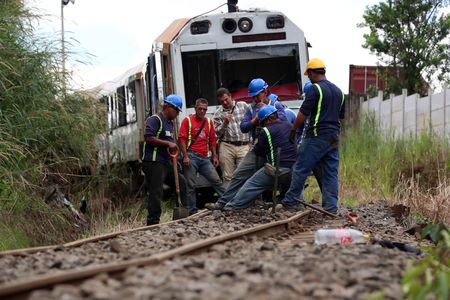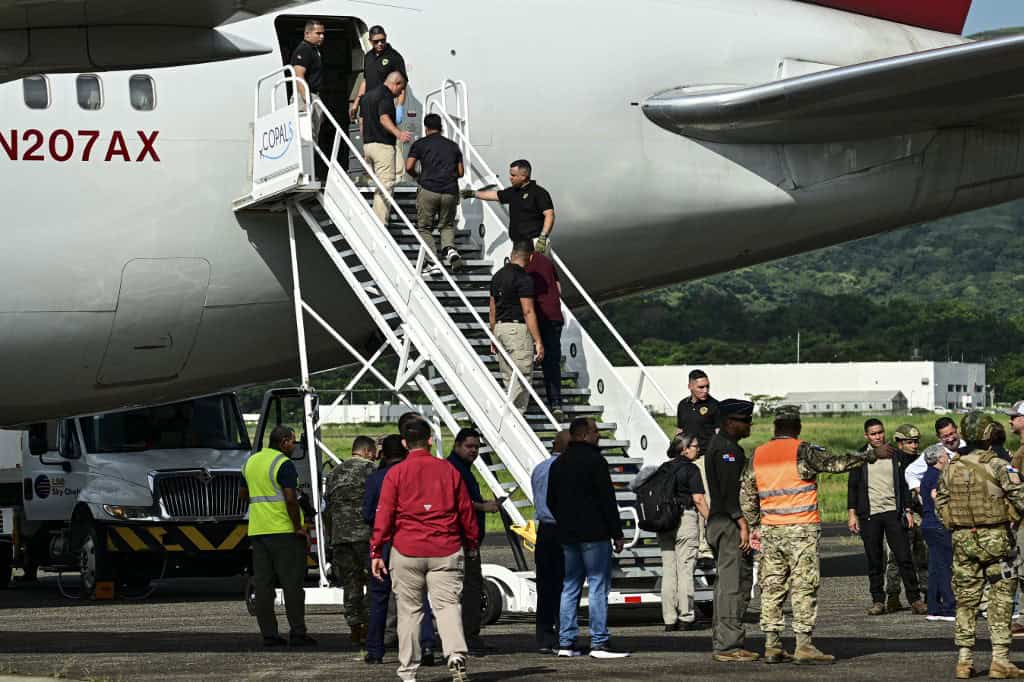Q24N () With downcast eyes, a heavy heart, an empty stomach, tired feet and a feeling of defeat, hundreds of people have arrived at the Paso Canoas, the southern border of Costa Rica, in recent weeks.
These are the same people who, at some point, set out on the route from their countries of origin, passed through the Darien jungle between Colombia and Panama and crossed all of Central America in search of a better life in the United States, with no small amount of difficulty.
Many were left behind along the way, losing their lives, others, their belongings and their dreams.
– Advertisement –
Today, the immigration policies of the Donald Trump Administration in the United States hit them like a steel wall and the first people who decided to return to their countries are already beginning to arrive on Costa Rican soil, despite the fear of being prosecuted as traitors to the homeland.
But the situation is different from what they found on their initial journey from south to north. They are no longer seen wandering the streets of the border between Costa Rica and Panama. They are hiding, almost staying in hotel rooms for fear that the police will lock them up and they will not be able to return to their lands.
Humanitarian aid organizations are not operating as they did months ago, since the United States cut their funds last week. The Temporary Migrant Care Center on the southern border, the Centro de Atención Temporal de Migrantes en la frontera Sur (Catem), is practically empty and the residents of the border areas are not as enthusiastic about helping them.
In Paso Canoas, migrants are afraid, they hide, and they try to go unnoticed.

– Advertisement –
From Costa Rica they are allowed to continue their journey to Panama, many of them pay “coyotes” who take them to the other side, but in the neighboring country they are not so lucky, if they are caught, especially if they are Venezuelan, they are locked up and soon returned to Costa Rican soil, because there is no repatriation plan to their country, which has caused many to remain trapped on the southern border.
Those who are lucky enough not to be caught no longer find help or humanitarian camps and must pay at least US$700 (about ¢350,000 colones) per person to be taken by boat to Colombia.
The issue is how to get the money, if they come with practically nothing.
The misfortune does not end
– Advertisement –
According to Lucy Nájera, a community leader in the southern part of the country, people do not return the same as when they passed through on their migration route, because they say they feel defeated, because in their country of origin they sold their house, possessions, everything. When they return they will have nothing.
“We have the case of a woman with her four teenage children and a five-year-old girl. She was going to family reunification because her husband had sent for her from the United States, but she could not get through. Right now she remains in the Paso Canoas area in a very difficult situation,” said Nájera.

The dynamic now is even more difficult than when they began the journey. The return involves paying coyotes to get to Panama, there they have to go through trails because the authorities prevent them from getting on a bus, they go to Puerto Bello and they put them on a boat along the dangerous route of the Guna Yala archipelagos to Turbo in Colombia.
The cost of this trip is higher than what they had to incur by going up the migratory route. Even confidential sources working for humanitarian aid organizations said that it can cost them up to US$1,000 per person, which they pay to the coyotes and they have to evade the checkpoints in Panama.
Daniel (fictitious name to maintain confidentiality) is a member of a family of four siblings, all minors, who travel with their mother. They arrived in Mexico last October, where they were kidnapped, everything they were carrying was taken from them and a $100 ransom was demanded for each one, which some relatives living in the United States had to send them.
“We stayed in Mexico for three months, we were locked up, we returned two weeks ago and we want to return to Venezuela, they don’t tell us anything, there are no deportation programs. We crossed into Panama at night, but we turned back because we didn’t know where to go and the Costa Rican Immigration Office doesn’t give us any information. At the moment my mother is working to get some food.”
“We just want to go back to our country”
Geiber Paredes and Karina Obregón are Venezuelan migrants, they returned from Mexico, a place that for them is true hell, they are not interested in asking for asylum in Costa Rica, or staying in Panama or Colombia.
“We just want to go back to our country. It has been very difficult, we suffered going up and now we continue to suffer on the way down. In Mexico we lived in terror, we spent 20 days walking, begging, and when we arrived in the city they did not give us the opportunity to request asylum, we lost money in many procedures and now we came back. We are stranded in Costa Rica due to lack of money and what we get is for food, they do not let us pass through Panama, they say that people are staying,” Karina recalled.
Geiber recounted how a few days ago they arrived in Panama, where they were received as if they were criminals. There they handcuffed him by the hands and legs and tied him to a pipe. The next day they returned him to Costa Rica.
“You have to sleep in the streets, in the terminals, on sidewalks, you lose your worth as a person, you go hungry. There are a lot of people who are returning, the crowd that came up is coming back, we wanted to be the first because it is known that people take advantage when masses of people come, they see it as a business,” said the young man.

What is coming
“I was in Mexico, I had worked for several months and I had an appointment to apply for asylum in the United States. The same day that Donald Trump announced measures against migrants, they canceled it. There were 4,000 of us waiting to be seen and we couldn’t do the paperwork,” said Carlos (fictitious name to maintain confidentiality), a Venezuelan migrant who is stranded in Paso Canoas.
He had to return from Mexico. He was accompanied by a group of about 400 people who were allowed to cross in Mexico to return to Guatemala, where they only let 37 of us in, and they charged us 700 quetzales (about ¢45,000 colones) per person to cross the border.
“We had to come by trails, they didn’t allow us to travel by bus, at the borders they let us through until we reached Costa Rica, but in Panama we are running into obstacles. Now this country should be worried because there are a lot of people coming down who are trying to return to Venezuela, Colombia or Ecuador and probably many are looking to stay because if they try to return on a flight they are sentenced to 15 to 35 years in prison for treason to the country,” warned Carlos.
Another community leader, whose name is kept confidential, told SEMANARIO UNIVERSIDAD that clearly the flow of migrants coming from Darien is less, at most one or two buses enter Catem per day. In fact, the weekly was able to confirm, during a visit to the Center, that from outside the facilities it can be seen that they are practically empty.
“Now the migratory flow is the opposite: people who are trying to return to their country, Venezuela or Colombia. We are concerned that those people who are moving towards Panama are being rejected and returned to Costa Rica, since the official indication of the Panamanian Government is that they will not receive anyone in an irregular manner. The aggravating factor is that both Panama and Costa Rica have broken relations with Venezuela and there are no consulates from that country that can facilitate the paperwork for a safe and accompanied return,” said the community leader.
At the moment, the flow of migrants coming from both the south and the north is not very large, but it is significant, and it is expected to intensify in the coming weeks, with the risk that more people will be stranded at the Paso Canoas border.
“The outlook is complicated and more serious if these flows grow, which we believe will happen. We already see people stuck in Paso Canoas and others will join with multiple needs for humanitarian assistance, such as lodging, food, access to health, accompaniment and legal guidance, while there is a cut in US funds to finance the operation of non-governmental organizations,” he said.
The article was translated and adapted from Semanario Universidad. Read the original in Spanish here.
– Advertisement –
Source link
Rico



